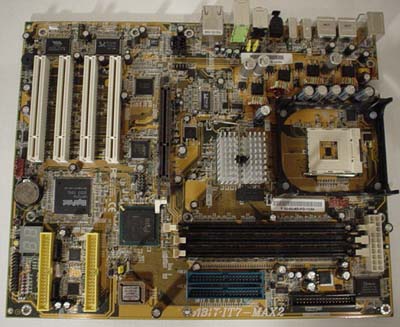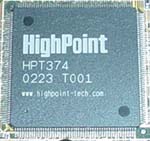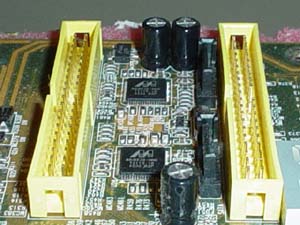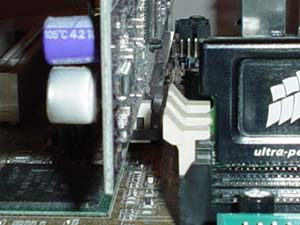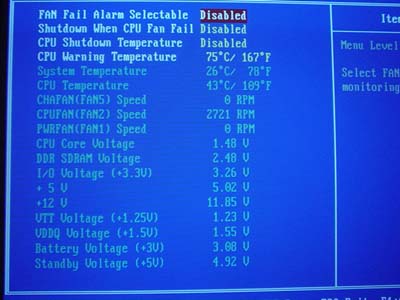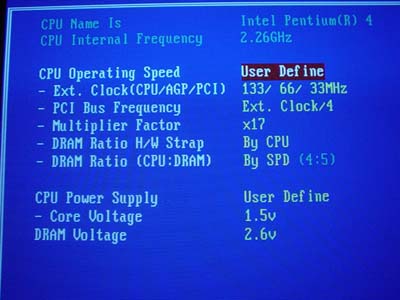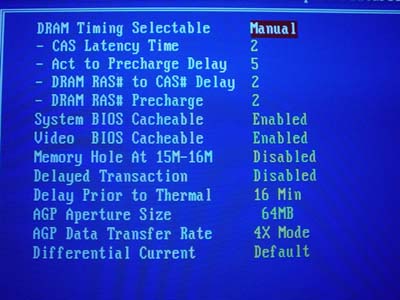
Original Link: https://www.anandtech.com/show/1054
With AMD’s Hammer (and corresponding motherboards) due sometime this quarter, we’ve decided to conclude our coverage of Intel’s 845PE chipset with a final individual motherboard review before the swarm of new motherboard and chipset technology (which includes Hammer and Springdale/Canterwood products) start arriving in the coming weeks/months.
Therefore, today we bring you our eighth individual 845PE motherboard review. The ABIT IT7 MAX2 V.2 is the new and improved version of the IT7 MAX2 V.1 (which was based on the now ancient 845E chipset, which officially supported no higher than DDR266 memory). See how the new and improved IT7 MAX2 stacks up against the competition, and why you might be able to throw in a shiny new Pentium 4 running at 800MHz FSB this year…
| Motherboard Specifications |
|
|
CPU
Interface |
Socket-478 |
|
Chipset |
Intel
82845PE MCH Intel 82801DB ICH |
|
Bus
Speeds |
up to 250MHz in 1MHz increments |
|
Core
Voltages Supported |
up
to 1.70V (in 0.025V increments) |
|
I/O
Voltages Supported |
N/A |
|
DRAM
Voltages Supported |
up
to 2.8V in 0.1V increments |
|
Memory
Slots |
3
184-pin DDR DIMM slots |
|
Expansion
Slots |
1
AGP 4X Slot 4 PCI Slots |
|
Onboard
RAID |
Highpoint
HPT374 Controller (two onboard RAID connectors) |
|
Onboard
USB 2.0/IEEE-1394 |
USB
2.0 Supported through South Bridge plus additional onboard USB 2.0 controller
(VIA VT6202) TI TSB43AB23 FireWire PHY |
|
Onboard
LAN |
Realtek
TRL8100B Controller |
|
Onboard
Audio |
Realtek
ALC650 Controller |
|
Onboard
Serial ATA |
Marvel
88i8030 (two onboard SATA connectors) |
|
BIOS
Revision |
11/28/2002 |
ABIT IT7 MAX2 Version 2: Basic Features
ABIT continues its series of MAX motherboards with the ABIT IT7 MAX2 Version 2 motherboard (try saying that three times fast).
Onboard LAN is powered by Realtek's RTL8100B chip. It’s no surprise to see that ABIT decided to go with this very conventional Realtek LAN controller, as Realtek heavily dominates the onboard LAN controller market, mostly because they’re able to sell for dirt cheap prices.
Not surprisingly, ABIT chose the Realtek ALC650 controller to power the IT7 MAX2 V.2’s onboard sound. Whether you believe it or not, the general sound quality the IT7 MAX2 V.2’s ALC650 outputs won’t be much different than motherboards that utilize nForce2 sound. This is because final sound quality is greatly determined by the DAC (Digital to Analog Converter) on the motherboard. The ABIT IT7 MAX2 V.2 as well as all nForce2 motherboards use Realtek’s ALC650 DAC, and therefore sound quality won’t be terribly different in most situations. However, if you need to do Dolby Digital Encoding, the nForce2’s APU (Audio Processing Unit) will be necessary.
ABIT is renowned for their feature-rich I/O configuration found on their MAX series of motherboards. Included are two PS/2 ports, six rear USB 2.0 ports, two rear FireWire ports, one LAN port, SPDIF and three 1/8' jacks, which are driven by the onboard sound. Without a doubt, ABIT is unmatched in this area of the motherboard.
The ABIT IT7 MAX2 V.2 perhaps has the best IDE support we’ve seen out of any enthusiast desktop motherboard. As usual, the Primary and Secondary IDE connectors support two channels each for as much as four separate drives (which includes hard drives, optical drives, etc.). However, what’s really nice about this board is that you can connect eight additional IDE drives to your system via two yellow onboard IDE RAID connectors (powered by HighPoint’s HPT374 controller) and two Serial ATA drives via two black Serial ATA RAID connectors (powered by Marvel’s 88i8030 controller). This capability is very important for users looking to set up large RAID arrays or users upgrading to Serial ATA in the future. In addition, users that simply desire additional IDE drives will be pleased of course.
All in all, the ABIT IT7 MAX2 V.2 is one of the most well-rounded Pentium 4 motherboards on the market.
ABIT IT7 MAX2 Version 2: Board Layout
In general we were very pleased with the general layout of the ABIT IT7 MAX2 V.2.
As we’ve always preferred, ABIT places the ATX (20-pin) connector on the right-hand side of the motherboard above the DIMM slots. This is the ideal position for the ATX connector positionaly, as the thick ATX wires won’t become obstruct the installation/uninstallation of the HSF or any other components that can be modified around that area.
The Primary and Secondary IDE connectors are also placed very nicely. Both connectors are placed above where our video card was installed. This will allow the end user to install an IDE drive at the very top of a full-sized ATX computer case. If both connectors were placed below the video card, you would likely have to maneuver your IDE cables around the video card (causing some clutter) and then hope that your IDE cables are long enough to reach the uppermost bay of your computer case. Unfortunately, when the Primary and Secondary IDE connectors are placed below the video card, most of the time you won’t be able to install an optical drive in the first bay of an ATX case.
Thankfully the DIMM connectors are located just far away enough from our video card that we weren’t forced to uninstall the video card before installing/uninstalling memory. This is true for all modern video cards, including some of the lengthy GeForce4 Ti4600 cards. ABIT was smart enough to rid us of this annoying issue thankfully.
Both the USB headers are positioned fairly well. In fact, they're placed right next to each other, at the lower half of the mid-section of the motherboard. By positioning these headers in this manner, you're not going to encounter any case clutter, as you the USB and FireWire bracket wires will be taking up the PCI slots you decide to take up, and not any other neighboring PCI slots or other components.
ABIT IT7 MAX2 Version 2: BIOS and Overclocking
Not surprisingly, ABIT continues to use its Soft Menu III BIOS. We have become quite fond of Soft Menu III, mostly due to the fact that ABIT’s Soft Menu III BIOS is very “tweaker” friendly and is well organized and easy to use in general.
The PC Health section of the IT7 MAX2 V.2 BIOS includes lots of readings. These include system and CPU temperature, fan speeds (chassis, CPU and power), Vcore, VDIMM, PSU readings (all rails), VAGP and a battery and standby voltage reading. There are also options for CPU Warning Temperature, CPU Shutdown temperature and two fan failure options.
Like some other motherboards BIOSes, ABIT adds a section dedicated to frequency and multiplier adjustment. You obviously won’t be able to take advantage of the multiplier options available in this BIOS (more on this later), but you will be able to take advantage of the frequency control options present (especially if you like to overclock). Some of features in this section include voltage adjustments (Vcore and VDIMM), FSB/AGP/PCI frequency tweaking and DRAM ratio adjustments.
In the Advanced Chipset Features of the IT7 MAX2 V.2 BIOS there are options for adjusting various memory timings such as Active to Precharge, Precharge to Active, Active to CMD and CAS latency. There are a few other minor DRAM timing options available, but nothing that will affect performance in any noticeable way. While this particular Advanced Chipset Features section is pretty standard among enthusiast motherboards, it pales in comparison to the nForce2 BIOSes we’ve tinkered with over the past couple months.
The max available FSB speed in the BIOS is 250MHz FSB. This FSB will do just fine for even the most hardcore overclockers, as it’s rare to see past a 200MHz FSB overclock with standard (locked) Pentium 4 processors. Interestingly enough, according to this page on ABIT’s USA website, the ABIT IT7 MAX2 V.2 was able to stabily operate at just over 220MHz FSB (or 882MHz QDR FSB) in their own independent tests. This piece of information could mean that if you purchase an ABIT IT7 MAX2 V.2 motherboard, you’ll be able to upgrade to future Pentium 4 processors such as the upcoming 200MHz FSB (or 800MHz QDR FSB) P4 processor without much trouble. If true, this would mean that end users won’t have to spend extra money on Springdale/Canterwood motherboards or extra money on a second memory module if they already have an ABIT IT7 MAX2 V.2 motherboard. Of course, the same may apply to other 845PE motherboards, so ABIT’s IT7 MAX2 V.2 may just be one of many boards capable of supporting 800MHz FSB P4 processors.
Getting back to the voltage adjustments available in ABIT’s Soft Menu III BIOS, we see that Vcore is adjustable up to 1.70V in .025V increments. This should satisfy the vast majority of overclockers, but serious overclockers need not apply here, as 1.70V is simply too low, especially when you consider that idle Vcore runs at more like 1.47V instead of 1.50V. If you happen to have a Pentium 4 processor that is a C1 stepping, then that limits your potential Vcore overvolt even more, as just about all C1 stepping Pentium 4 processors run at a stock Vcore of 1.525V. And if you’re that rare and lucky individual that happens to have a 3.06GHz Pentium 4 processor to play with, your Vcore overvolt will be further limited, since 3.06GHz Pentium 4 processors have an stock Vcore of 1.55V.
ABIT includes some flexible VDIMM control in Soft Menu III. Here you’re able to adjust VDIMM all the way up to 2.8V in 0.1V increments. Actual VDIMM as read in the BIOS PC Health section fluctuates between 2.59 and 2.60V when VDIMM is set to 2.6V, so you should be able to hit an actual 2.79 or 2.8V, though we don’t recommend raising VDIMM past 2.7V. As usual, we see that the 845PE-based ABIT IT7 MAX2 V.2 contains an AGP/PCI lock at 33MHz/66MHz. This feature is a godsend to users that upgrade to processors with higher FSB’s (since changing the FSB also changes the AGP and PCI buses, unless you have an AGP/PCI lock of course). Overclockers will also rejoice over this feature, as running your AGP or PCI cards out of spec can have devastating consequences on the condition of your AGP and PCI cards.
The ABIT IT7 MAX2 V.2, like most of the other 845PE motherboards, was easy to overclock. As is becoming standard nowadays, FSB overclocking can be done totally within the BIOS of your motherboard, meaning no switches or jumpers to worry about. Here were our FSB overclocking results using the following setup:
| Front
Side Bus Overclocking Testbed |
|
|
Processor: |
Pentium
4 2.26GHz |
|
CPU
Vcore: |
1.5V
(acutal) |
|
Cooling: |
Intel
Retail HSF & Thermal Pad |
|
Power
Supply: |
Enermax
300W |
With this conservative overclocking setup we had no trouble hitting 164MHz FSB. Unfortunately, there are no unlocked Pentium 4 processors currently available on the market, which is unfortunate for two reasons. Firstly, being able to access various multipliers of your processor (which is the definition of an “unlocked” processor) allows the user to raise the FSB higher than would be possible with a plain locked processor. Assuming the same core clock speed, a higher FSB will inevitably lead to higher performance in most commonly used applications. The second (and final) reason it's unfortunate that Pentium 4 processors come factory locked lies in the fact that it becomes much more difficult to test the highest (“true”) FSB a particular motherboard can reach. This is unfortunate for hardware review web sites such as AnandTech, and adds considerable confusion to users who aren’t familiar with the difference between locked and unlocked processors.
ABIT IT7 MAX2 Version 2: Stress Testing
The ABIT IT7 MAX2 V.2 was tested in several different areas and configurations, including:
- Chipset and motherboard stress testing was conducted by running the FSB at 164MHz.
- Memory stress testing was conducted by running RAM at 333MHz with two of three memory banks filled and then with all memory banks filled at the most aggressive timings possible.
Front Side Bus Stress Test Results
The ABIT IT7 MAX2 V.2 was able to hit quite a high FSB speed (164MHz) with exceptional stability. Of course, this isn’t surprising considering the IT7 MAX2 V.2 is based on Intel’s 845PE chipset, which has proven to be an extraordinary overclocker compared to Pentium 4 solutions from Taiwanese manufacturers like VIA and SiS. We were able to spend a bit more time with the IT7 MAX2 V.2 with this review, so we ran Prime95 for a bit longer. In total, we ran Prime95 torture tests for 72 hours straight. As Prime95 was running in the background, we reran our gaming suite as well as everyday apps like Word and Excel in addition some data compression here and there. We also managed to rerun SPECviewperf, Sciencemark and XMPEG again. Throughout these numerous stress tests, the ABIT IT7 MAX2 V.2 was able to operate stabily at 164MHz FSB.
Memory Stress Test Results:
Lets see how well the ABIT IT7 MAX2 V.2 is able to handle two memory modules running at 333MHz DDR. Here were the tightest timings we were able to achieve in this configuration:
| Stable
DDR333 Timings |
|
|
Clock
Speed: |
166MHz |
|
Timing
Mode: |
N/A |
|
CAS
Latency: |
2 |
|
Bank
Interleave: |
N/A |
|
Precharge
to Active: |
2T |
|
Active
to Precharge: |
5T |
|
Active
to CMD: |
2T |
|
Command
Rate: |
N/A |
These are the max timings you can achieve with the IT7 MAX2 V.2 BIOS (11/28/02) and two Corsair XMS DDR400 modules. This type of memory performance shouldn’t be too difficult for most 845PE motherboards, as well as most Pentium 4 motherboards in general. Of course, these timings likely wouldn’t be possible with anything but Corsair XMS memory or some other type of high-quality high-speed memory.
This final memory test demonstrates the lowest timings we were able to achieve with three memory modules running at the motherboard’s officially supported speed of DDR333. Here were our results:
| Stable
DDR333 Timings |
|
|
Clock
Speed: |
166MHz |
|
Timing
Mode: |
N/A |
|
CAS
Latency: |
2 |
|
Bank
Interleave: |
N/A |
|
Precharge
to Active: |
2T |
|
Active
to Precharge: |
5T |
|
Active
to CMD: |
2T |
|
Command
Rate: |
N/A |
These timings are precisely what you should expect from any motherboard that claims official support for any type of DDR memory. From our extensive memory testing, it’s apparent that motherboards based on the same exact chipset won’t necessarily be able to perform exactly the same way as far as memory goes. Our 3-way 845PE shootout last October proved this, as did the other four 845PE reviews that followed that shootout.
Our memory overclocking tests proved to be very successful for the most part. Here was the highest memory overclock we were able to achieve at CAS2/2T/5T/2T memory timings:
| Stable
Memory Overclocking Results |
|||
| Memory |
Memory Clock | FSB | VDIMM |
| Corsair
CAS2.0 DDR400 |
410MHz | 165MHz | 2.60V |
We had to ensure the various memory timings and frequencies we were able to operate at were fully stable. Therefore, we ran 24 hours of Prime95 torture tests, various Super Pi stress tests and, finally, reran various benchmarks like SPECviewperf 7.0 and Sciencemark. In the end, we didn't encounter any noticeable issues with any of the listed memory timings and frequencies we reached during these stress tests.
ABIT IT7 MAX2 Version 2: Tech Support and RMA
For your reference, we will repost our support evaluation procedure here:
The way our Tech Support evaluation works is first we anonymously email the manufacturer's tech support address(es), obviously not using our AnandTech mail server to avoid any sort of preferential treatment. Our emails (we can and will send more than one just to make sure we're not getting the staff on an "off" day) all contain fixable problems that we've had with our motherboard. We then give the manufacturer up to 72 hours to respond over business days and will report not only whether they even responded within the time allotted but also if they were successful in fixing our problems. If we do eventually receive a response after the review is published, we will go back and amend the review with the total time it took for the manufacturer to respond to our requests.
The idea here is to encourage manufacturers to improve their technical support as well as provide new criteria to base your motherboard purchasing decisions upon; with motherboards looking more and more alike every day, we have to help separate the boys from the men in as many ways as possible. As usual, we're interested in your feedback on this and other parts of our reviews so please do email us with your comments.
ABIT's RMA policy hasn't changed since the last time we took a look at it. Information regarding ABIT's U.S. RMA policy, dubbed eRMA (Express RMA), can be found here.
ABIT's eRMA guarantees two critical things that most other motherboard makers are too shy or unwilling to make:
1. ABIT clearly explains that they will accept and process direct RMAs.
2. ABIT guarantees a 10-day turnaround policy on all RMAed motherboards.
ABIT's RMA and warranty information are also easily accessible on their U.S. web site by simply clicking the eRMA hyperlink at the left-hand corner of the page and cycling through each category. All in all, ABIT continues to do a great job making their RMA and warranty information easily available and understandable on their web site, which is a huge advantage over other top tier motherboard manufacturers.
ABIT's tech support isn't as impressive as far as available information on their web site. However, there is an email address you can use if you need to write to tech support, which is [email protected]. You can also reach ABIT in the U.S. by phone at (510) 492-0968 as well. Their hours are pretty good too; 9:00am to 6:00pm (although ASUS's phone hours are a bit better in the U.S.).
As far as email tech support response time was concerned, ABIT did slightly worse this time around, though 37 hours certainly isn't too bad at all (this is 15 hours longer than last time). Yet again, tech support was friendly and very helpful in general, and they indeed answered our question correctly.
We'd like to reiterate that ABIT's RMA policy is unmatched in the U.S.; no other motherboard manufacturer comes close. In combination with their timely tech support reply, we feel ABIT is one of the best (if not the best) motherboard manufacturer to turn to for motherboard customer service and support in the U.S. Hopefully ASUS and others will follow suit.
The Test
| Performance Test Configuration |
||
| Processor(s): | Intel
Pentium 4 2.26GHz |
|
| RAM: | 512MB Corsair DDR400 CAS2.0 Module 256MB Corsair DDR400 CAS2.0 Modules |
|
| Hard Drive(s): | Western
Digital 120GB 7200 RPM Special Edition (8MB Buffer) |
|
| Bus Master Drivers: |
Intel INF Update v. 4.04.1012 Intel Application Accelerator v2.3 |
|
| Video Card(s): | ASUS
V8460 Ultra NVIDIA GeForce4 Ti 4600 |
|
| Video Drivers: | NVIDIA Detonator 40.72 (WHQL Certified) |
|
| Operation System(s): | Windows
XP Professional SP1 |
|
| Motherboards: | ABIT
IT7 MAX2 Rev 2 (845PE) ASUS P4G8X Deluxe (E7205) ASUS P4T533-C (850E) Albatron PX845PEV Pro (845PE) |
|
All performance tests run on E7205-based motherboards utilized two 256MB Corsair XMS DDR400 modules set to CAS 2/2T/5T/2T timings and running at 266MHz (dual channel). Any other performance-enhancing timings (like Command Rate or Bank Interleave) were enabled in E7205-based motherboards that contained such timings. All stock performance tests run on 845PE motherboards utilized one 512MB Corsair XMS DDR400 module set to CAS 2/2T/5T/2T timings and running at 333MHz. Any other performance-enhancing timings (like Command Rate or Bank Interleave) were enabled in motherboards that contained such timings.
The AnandTech Motherboard Testbed was Sponsored by Newegg. You can buy the components we used to test at www.newegg.com.
Content Creation & General Usage Performance
For our Content Creation & General Usage performance we continue to use SYSMark 2002. The applications benchmarked include:
- Internet Content Generation: Adobe Photoshop 6.01, Adobe
Premiere 6.0, Microsoft Windows Media Encoder 7.1, Macromedia Dreamweaver
4, and Macromedia Flash 5
- Office Productivity: Microsoft Word 2002, Microsoft Excel 2002, Microsoft PowerPoint 2002, Microsoft Outlook 2002, Microsoft Access 2002, Netscape Communicator® 6.0, Dragon NaturallySpeaking Preferred v.5, WinZip 8.0, and McAfee VirusScan 5.13
For more information on the methodology and exactly what SYSMark does to generate these performance scores check out BAPCo's SYSMark 2002 Whitepaper.
|
|
Gaming Performance
|
|
Gaming Performance (continued...)
|
|
High End Workstation Performance - SPEC Viewperf 7.0
The latest version of SPEC Viewperf proves to be an excellent stress test for memory bandwidth and overall platform performance as you're about to see. The benchmarks included version 7 of the benchmark suite are:
3ds max (3dsmax-01)
Unigraphics (ugs-01)
Pro/Engineer (proe-01)
DesignReview (drv-08)
Data Explorer (dx-07)
Lightscape (light-05)
For more information on the tests run visit SPEC's page on the new Viewperf benchmark.
|
|
|
High-End Workstation Performance (continued...)
|
|
|
|
Final Words
After thoroughly benchmarking and stress testing ABIT’s flagship Pentium 4 motherboard (IT7 MAX2 V.2), we came to several conclusions.
- For those users that are on a tight budget and simply need a fast and cheap motherboard, the ABIT IT7 MAX2 V.2 isn’t ideal. Clearly the ABIT IT7 MAX2 V.2 is not targeted at the budget/value market, so it shouldn’t be surprising in the least that we don’t recommend the ABIT IT7 MAX2 V.2 motherboard for price conscience users.
- For those users that are simply interested in a feature-filled, fast, and reasonably priced motherboard, the ABIT IT7 MAX2 V.2 is quite decent. Its price is a bit steep for this category, but the features and performance it brings to the table are just too overwhelming not to give the IT7 MAX2 V.2 an honorable mention in this category.
- For those users that desire a flexible, feature-filled and overclockable motherboard no matter the price, the ABIT IT7 MAX2 V.2 couldn’t be a more perfect choice. The ABIT IT7 MAX2 V.2 is an excellent overclocker and has a good deal of tweaking options available in the BIOS as well (DRAM adjustments among other options). Of course, it goes without saying that the ABIT IT7 MAX2 V.2 is loaded with features. In fact, taking into account the IT7 MAX2 V.2’s bundled accessories and ABIT’s outstanding U.S. Technical Support and RMA policy, we would have to say that the ABIT IT7 MAX2 V.2 is the most complete Pentium 4 motherboard solution currently available on the market.
Stay tuned for coverage on highly anticipated motherboard and chipset technologies such as Intel’s Springdale/Canterwood chipset and NVIDIA, SiS, VIA and AMD Hammer chipsets.

